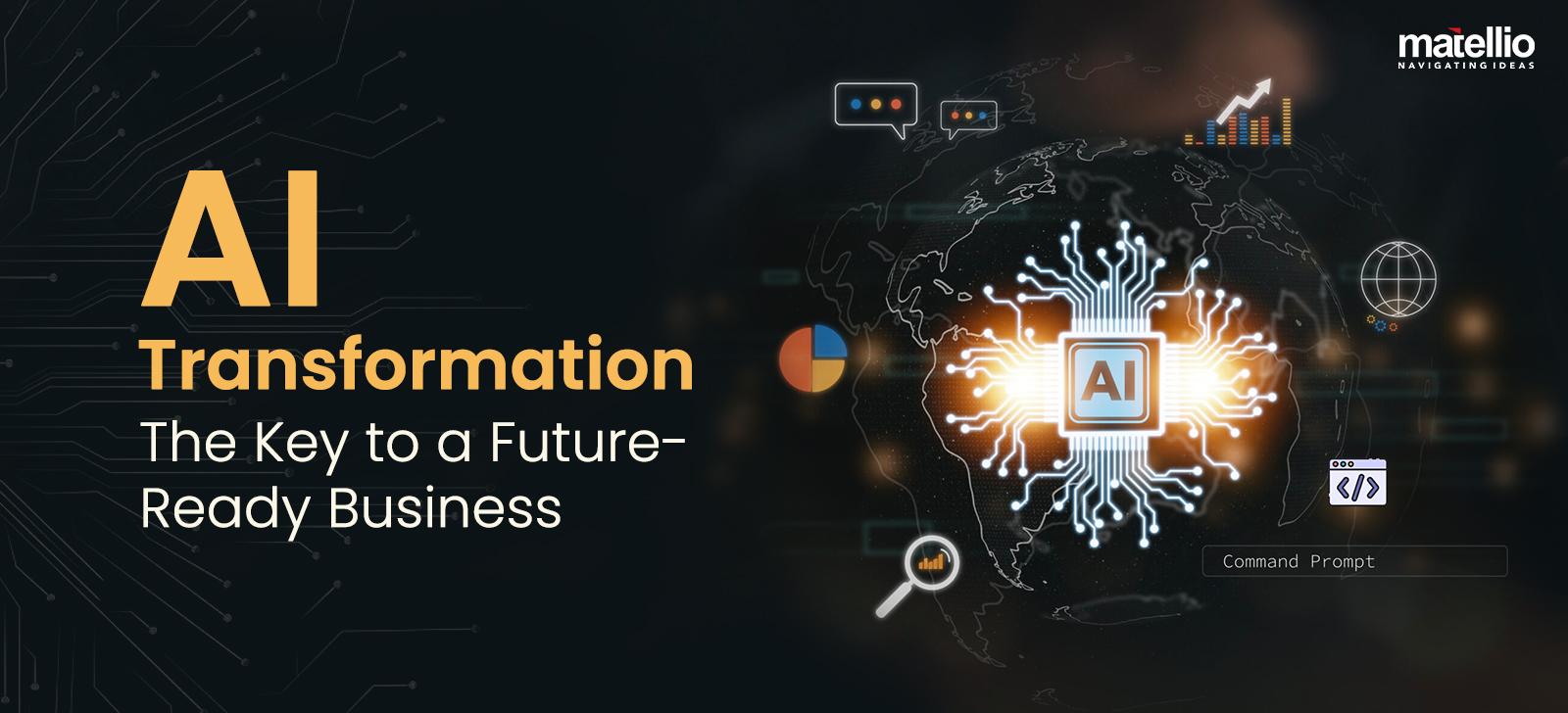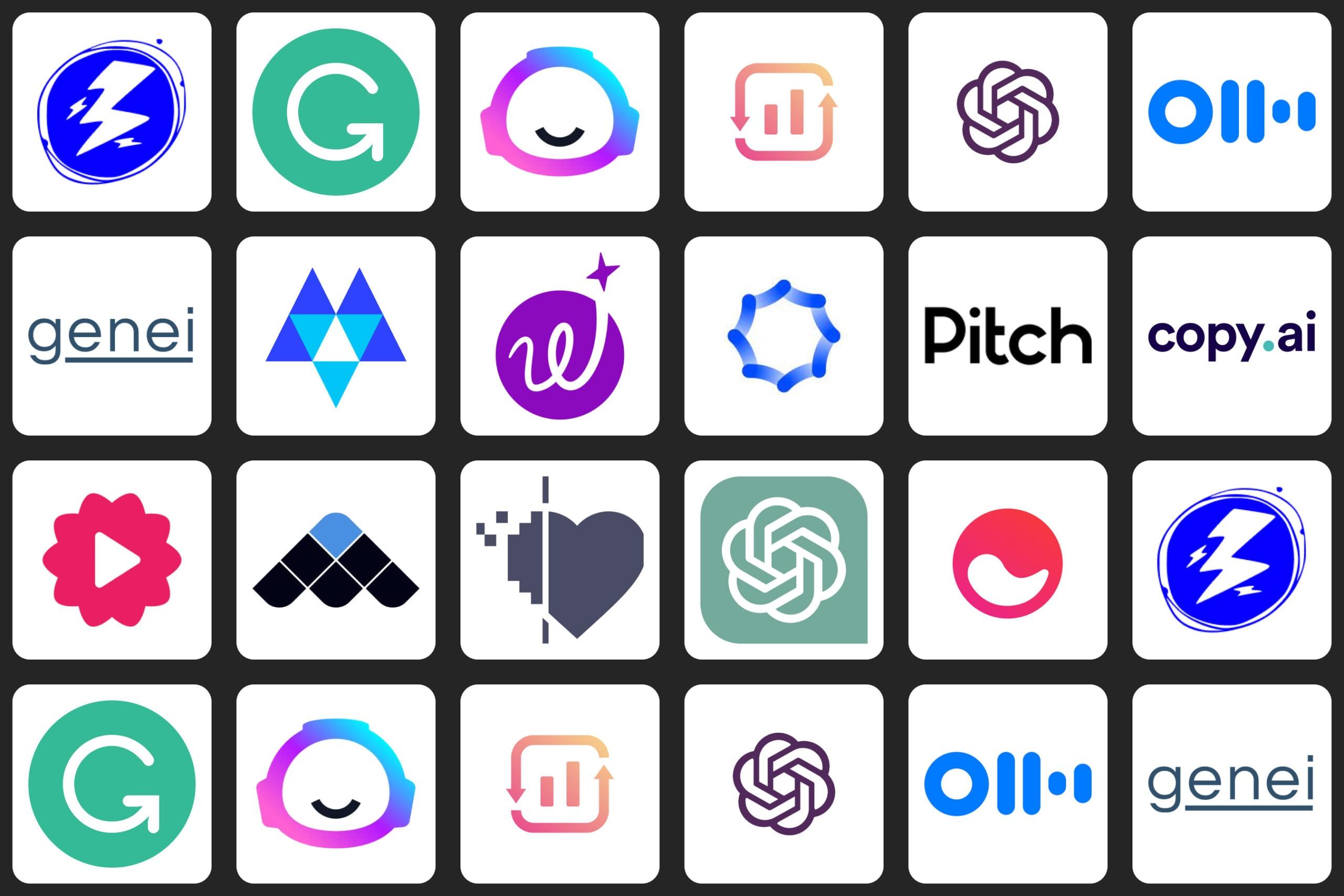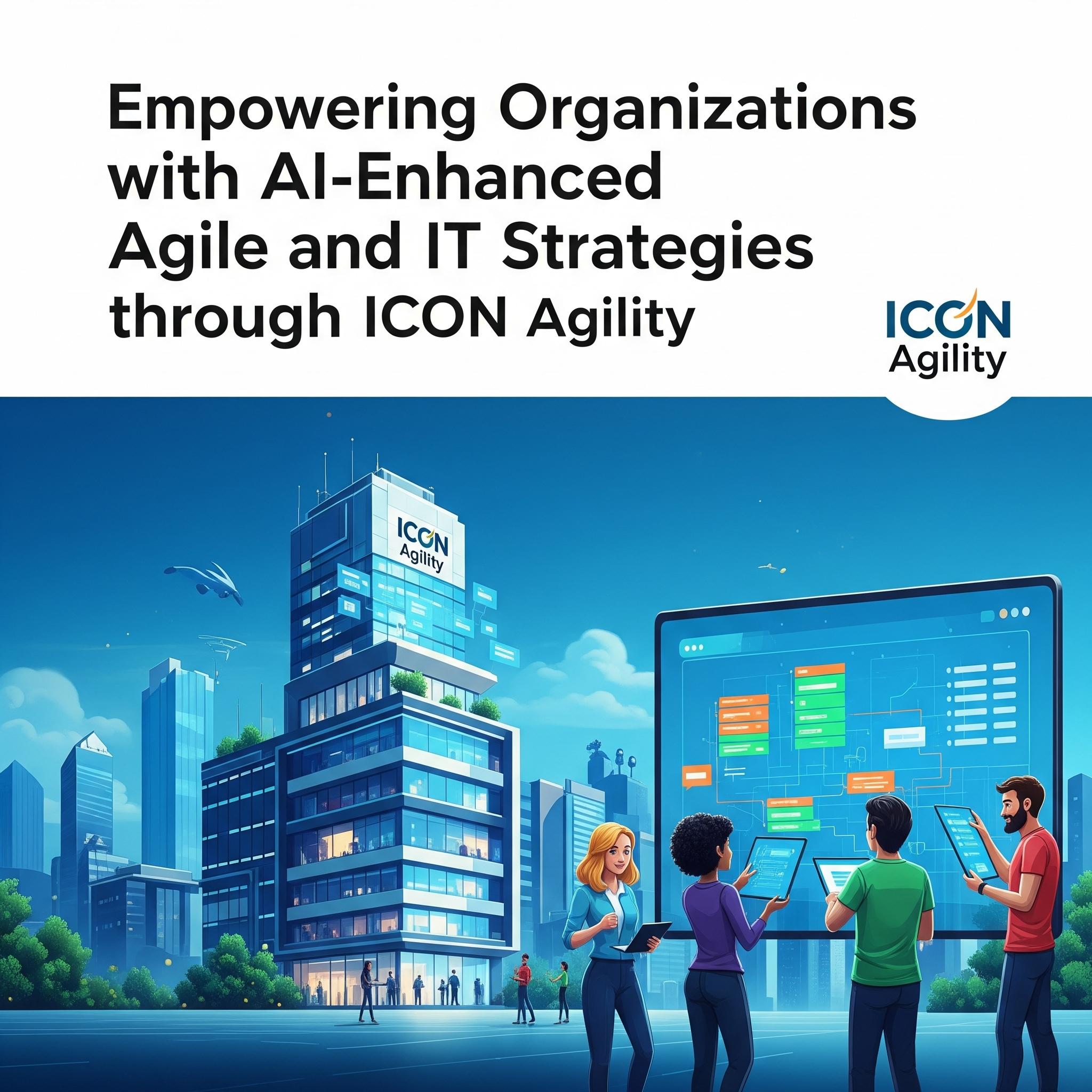In today’s fast-paced business landscape, artificial intelligence transforms ideas into impactful actions. By harnessing AI’s potential, companies can innovate faster, optimize operations, and elevate customer experiences, paving the way for a brighter, more efficient future. Embrace the revolution!
From Ideas to Action: How Artificial Intelligence Elevates the World of Business
In today’s fast-paced and ever-evolving marketplace, the difference between merely surviving and truly thriving often hinges on the ability to transform innovative ideas into actionable strategies. Enter artificial intelligence, a groundbreaking force that is redefining the landscape of business as we know it. From automating mundane tasks to providing deep insights that drive decision-making, AI is not just a tool; it is a catalyst for change, empowering organizations to unlock their full potential. Imagine a world where creativity meets efficiency, where data-driven insights illuminate new pathways to success, and where businesses can adapt and grow at an unprecedented pace. As we delve into the transformative power of AI, we will explore how it elevates the world of business, turning visionary concepts into tangible results. Join us on this journey to discover the incredible possibilities that lie ahead, as we harness the power of artificial intelligence to shape a brighter, more innovative future.
Unlocking the Power of AI to Transform Business Strategies
The integration of artificial intelligence into business strategies is not just a trend; it’s a transformative force that can redefine how companies operate, engage with customers, and achieve their goals. By harnessing the capabilities of AI, businesses can unlock unprecedented levels of efficiency and creativity, setting the stage for innovation.
One of the most compelling advantages of AI is its ability to analyze vast amounts of data quickly and accurately. This capability enables organizations to:
- Make data-driven decisions: AI algorithms can identify patterns and insights that are often invisible to human analysts, allowing businesses to make informed decisions.
- Enhance customer experiences: By analyzing customer behavior, AI can personalize interactions and deliver tailored recommendations, fostering loyalty.
- Optimize operations: Automation tools powered by AI can streamline processes, reduce costs, and eliminate human error, driving efficiency across the board.
Moreover, AI fosters innovation by empowering teams to focus on strategic thinking rather than mundane tasks. By automating repetitive processes, employees can dedicate their time and energy to creative problem-solving and exploring new business models. This shift leads to a more dynamic work environment where ideas flourish.
Consider the following table that highlights key AI applications across various business sectors:
| Business Sector | AI Application | Impact |
|---|---|---|
| E-commerce | Personalized Recommendations | Increased Sales |
| Healthcare | Predictive Analytics | Improved Patient Outcomes |
| Finance | Fraud Detection | Reduced Losses |
| Manufacturing | Predictive Maintenance | Minimized Downtime |
As organizations embark on their AI journeys, it’s crucial to foster a culture that embraces change and innovation. Training employees to understand and leverage AI tools enhances their capabilities and equips them to contribute to a company’s strategic goals. This cultural shift can lead to:
- Increased adaptability: A workforce that is open to embracing technology will be better prepared for future challenges.
- Enhanced collaboration: AI tools can facilitate better communication across departments, breaking down silos and promoting teamwork.
- Greater job satisfaction: Employees engaged in meaningful, intellectually stimulating work are more likely to feel fulfilled in their roles.
In a world where the pace of change is relentless, businesses that harness the power of AI will not only survive but thrive. By transforming ideas into actionable strategies, organizations can position themselves at the forefront of innovation, ready to seize new opportunities and shape the future of their industries.

Harnessing Data Analytics to Drive Informed Decision Making
In today’s fast-paced business environment, the ability to analyze and interpret data has become a cornerstone of strategic decision-making. Companies that leverage the power of data analytics can uncover valuable insights, streamline operations, and enhance customer experiences. By transforming raw data into actionable intelligence, businesses can pivot swiftly and maintain competitive advantages in their respective markets.
Data analytics empowers organizations by:
- Identifying Trends: Analyzing historical data helps businesses recognize patterns and forecast future trends, allowing them to tailor their strategies accordingly.
- Enhancing Customer Insights: Understanding customer preferences through data analytics enables companies to create personalized experiences that drive loyalty and satisfaction.
- Optimizing Operations: Data-driven decisions can lead to more efficient processes, reducing costs and increasing overall productivity.
- Boosting Innovation: Insights gleaned from data can inspire new product development and service offerings, keeping businesses relevant and forward-thinking.
To effectively harness data analytics, it is crucial for businesses to adopt a culture of data-driven decision-making. This involves integrating analytics into everyday processes, encouraging teams to utilize data in their strategies, and fostering an environment of continuous learning. By doing so, organizations can not only enhance their decision-making capabilities but also empower their employees to take ownership of their roles in driving success.
As companies embark on their data analytics journey, they often face challenges related to data quality, integration, and interpretation. Investing in robust data management solutions and training staff on analytical tools can mitigate these issues, setting the stage for more informed decision-making.
| Key Benefits | Examples |
|---|---|
| Improved Marketing Strategies | Targeted campaigns based on customer data analysis. |
| Enhanced Financial Planning | Forecasting sales trends to inform budgeting. |
| Risk Management | Identifying potential market disruptions through trend analysis. |
In essence, the integration of data analytics within business operations not only aids in making informed decisions but also cultivates a proactive approach to challenges. As organizations continue to evolve, those that embrace data-driven methodologies will not only survive but thrive in an increasingly complex marketplace. The journey from ideas to action is defined by the insights we glean from data, driving us toward innovative solutions and a brighter future.

Revolutionizing Customer Experiences Through Personalization
In today’s fast-paced digital landscape, businesses are discovering that one-size-fits-all strategies are no longer effective. Customers crave connections that feel personal, and this is where artificial intelligence steps in to redefine how organizations interact with their audiences. By leveraging AI technologies, businesses can analyze vast amounts of data to create tailored experiences that resonate deeply with each individual.
Imagine a world where your browsing history, preferences, and even your emotional responses are seamlessly integrated into your shopping experience. AI can track and interpret this data to provide:
- Customized product recommendations that anticipate needs before they arise.
- Dynamic content delivery that adjusts in real-time based on user interaction.
- Targeted marketing campaigns that speak directly to specific segments of the audience.
Consider the potential of AI-powered chatbots, which are revolutionizing customer service. These virtual assistants can provide instant responses, guiding users through their inquiries with a level of personalization that was previously unimaginable. By analyzing previous interactions, chatbots can:
- Offer tailored solutions based on past purchases and interactions.
- Provide a consistent, 24/7 support experience for customers.
- Free up human agents to focus on more complex queries.
The impact of personalization goes beyond individual transactions; it fosters loyalty and builds long-lasting relationships. When customers feel valued and understood, they are more likely to return. To illustrate this, consider the following data:
| Statistic | Impact of Personalization |
|---|---|
| 80% | of consumers are more likely to make a purchase when brands offer personalized experiences. |
| 63% | of consumers expect personalization as a standard of service. |
| 90% | of consumers find personalization appealing. |
By embracing AI for personalization, businesses not only enhance the customer experience but also gain valuable insights into market trends and consumer behavior. This data-driven approach allows companies to pivot quickly, adapting their strategies to meet the evolving needs of their customers.
As we move forward, the integration of AI in personalization will continue to evolve, presenting new opportunities for businesses to create unique and memorable experiences. Those who harness this power will not only lead their sectors but will also redefine what it means to connect with customers on a meaningful level.

Streamlining Operations with Intelligent Automation
In the modern business landscape, the integration of artificial intelligence into daily operations is not just a trend; it’s an imperative for success. Intelligent automation is transforming the way organizations function, enabling them to operate more efficiently, reduce costs, and enhance customer experiences. By leveraging AI technologies, businesses can turn routine tasks into automated processes, allowing teams to focus on strategic initiatives that drive growth.
Automation powered by AI is capable of handling a myriad of tasks, leading to significant improvements in productivity. Consider the following areas where intelligent automation can make a substantial impact:
- Data Entry and Management: Automating repetitive data tasks minimizes human error and frees up valuable time for employees.
- Customer Service: AI-driven chatbots can provide instant responses to customer inquiries, ensuring a seamless experience while building stronger customer relationships.
- Supply Chain Optimization: Intelligent systems can forecast demand, manage inventory levels, and streamline logistics, enhancing overall efficiency.
- Financial Analysis: Automation tools can analyze vast amounts of financial data, providing insights that were previously time-consuming and labor-intensive.
Implementing intelligent automation involves more than just technology; it requires a cultural shift within organizations. Leaders must embrace a mindset that values innovation and encourages employees to adapt to new workflows. Training and development programs tailored to equip teams with the necessary skills can facilitate this transition, ensuring that everyone is prepared to harness the power of AI.
To illustrate the potential benefits of adopting intelligent automation, consider the following table highlighting key outcomes:
| Outcome | Before Automation | After Automation |
|---|---|---|
| Task Completion Time | Hours per Week | Minutes per Week |
| Error Rate | 10% | 1% |
| Customer Response Time | 24 Hours | Instant |
As organizations embrace the transformative potential of AI, they pave the way for a future where human and machine collaboration thrives. Intelligent automation not only drives efficiency but also fosters innovation, empowering businesses to pivot quickly in response to market changes. By prioritizing this integration, companies can turn their ideas into actionable strategies that elevate their operational success, ensuring they remain competitive in an ever-evolving business environment.

Enhancing Collaboration and Communication in the Workplace
In today’s fast-paced business environment, effective collaboration and communication are vital for driving innovation and achieving organizational goals. Artificial Intelligence (AI) serves as a transformative tool, enhancing these elements by streamlining workflows and fostering connectivity among teams.
AI technologies facilitate real-time communication, enabling teams to share ideas instantly and resolve issues as they arise. By leveraging AI-powered chatbots and communication platforms, businesses can:
- Reduce Response Times: AI can handle routine inquiries, allowing human employees to focus on more complex issues.
- Enhance Accessibility: Team members can communicate across different time zones and geographies seamlessly.
- Improve Clarity: AI tools can summarize discussions and highlight key action points, minimizing misunderstandings.
Furthermore, AI-driven analytics provide invaluable insights into teamwork dynamics and communication patterns. By identifying bottlenecks and areas for improvement, organizations can tailor their collaboration strategies effectively. For instance, tools that track engagement metrics can help leaders understand:
| Metric | Insight |
|---|---|
| Response Time | Identify delays in communication and take corrective action. |
| Engagement Levels | Spot trends in participation to enhance inclusion. |
| Feedback Quality | Gauge the effectiveness of collaborative efforts and improve future initiatives. |
Additionally, AI can personalize the collaboration experience. By analyzing individual work styles and preferences, AI can recommend optimal collaboration tools and techniques for each team member. This level of customization empowers employees to leverage their strengths, fostering a culture of innovation and creativity.
Embracing AI in the realm of communication not only enhances productivity but also cultivates a more connected workplace. As organizations harness these advanced technologies, they pave the way for a synergistic environment where collaboration thrives, leading to groundbreaking ideas and successful outcomes.

Fostering Innovation through AI-Driven Research and Development
In today’s rapidly evolving business landscape, the integration of artificial intelligence into research and development is reshaping how organizations innovate and compete. By leveraging AI technologies, companies can streamline their R&D processes, gaining insights that were previously unimaginable. This transformation not only enhances productivity but also drives the creation of groundbreaking products and services.
AI empowers teams to:
- Analyze Market Trends: AI tools can process vast amounts of data to identify patterns and emerging trends, allowing businesses to stay ahead of the competition.
- Enhance Decision-Making: With predictive analytics, AI helps leaders make informed decisions based on real-time data and forecasts.
- Optimize Resource Allocation: AI algorithms can determine the most efficient use of resources, ensuring that investment in R&D yields the highest returns.
Moreover, AI facilitates a culture of experimentation and agility. Companies can rapidly prototype and test new concepts without the traditional bottlenecks associated with R&D. This approach reduces time-to-market and allows businesses to respond swiftly to customer feedback, fostering a cycle of continuous improvement.
To illustrate the impact of AI-driven innovation, consider the following table showcasing successful companies that have embraced AI in their R&D strategies:
| Company | AI Application | Outcome |
|---|---|---|
| Machine Learning for Search Algorithms | Improved search accuracy and user satisfaction | |
| IBM | Watson for Drug Discovery | Reduced research time and development costs |
| Amazon | AI in Supply Chain Management | Enhanced efficiency and reduced delivery times |
These examples highlight how AI not only accelerates innovation but also creates a competitive advantage. Businesses that invest in AI-driven R&D are not merely adapting; they are transforming their entire modus operandi, fostering an environment where creativity and technology coalesce to generate unprecedented opportunities.
Ultimately, the fusion of artificial intelligence with research and development signifies a new era in business innovation. It is a call to action for organizations to embrace these technologies, to think beyond conventional boundaries, and to envision a future where innovation knows no limits.

Mitigating Risks and Ensuring Compliance with Smart Solutions
In today’s rapidly evolving business environment, companies face a multitude of challenges that require innovative solutions. Implementing smart technologies, particularly those driven by artificial intelligence, can significantly mitigate risks and enhance compliance across various operational sectors. By leveraging data analytics and machine learning, organizations can achieve a more proactive stance in identifying potential threats and ensuring adherence to regulatory frameworks.
Proactive Risk Management is no longer a luxury but a necessity for businesses aiming to thrive. AI systems can analyze vast amounts of data in real-time, identifying patterns and anomalies that may indicate emerging risks. This capability empowers companies to take preemptive action rather than reacting to crises after they occur. For example, AI can help in:
- Monitoring financial transactions for fraudulent activities.
- Assessing supply chain vulnerabilities.
- Evaluating employee compliance with safety protocols.
Moreover, automating compliance processes through intelligent solutions minimizes human error and streamlines operations. By integrating AI with compliance management systems, businesses can continuously monitor their adherence to industry standards and regulations, thereby reducing the likelihood of costly penalties or legal issues. Key benefits include:
- Real-time updates on regulatory changes.
- Automated reporting and documentation.
- Enhanced accuracy in compliance audits.
| Smart Solution | Risk Mitigation Benefit |
|---|---|
| AI-Powered Analytics | Identifies trends and risks proactively |
| Automated Compliance Tools | Reduces human error and operational risks |
| Predictive Modeling | Forecasts potential compliance issues |
Adopting smart solutions doesn’t just safeguard a business; it cultivates a culture of accountability and responsibility. In an age where data privacy and security are paramount, having robust systems to manage risk and ensure compliance can set a company apart from its competitors. Businesses that prioritize these elements are not just mitigating risks; they’re fostering trust among stakeholders, clients, and employees alike.
the integration of artificial intelligence into risk management and compliance processes is not merely about keeping the business afloat; it’s about sailing ahead of the competition. By embracing these innovative technologies, organizations can transform risks into opportunities, ensuring resilience and long-term success in a complex and challenging landscape.

Empowering Employees with AI Tools for Greater Productivity
In today’s fast-paced business landscape, the integration of artificial intelligence tools is not just a trend; it’s a necessity for companies aiming to boost productivity and foster innovation. By leveraging AI, organizations can empower their employees, enabling them to focus on high-level strategic tasks rather than mundane, repetitive activities.
AI tools can automate various processes, leading to significant improvements in efficiency. Employees no longer need to spend countless hours on data entry or basic analyses, allowing them to:
- Engage in creative problem-solving: With routine tasks handled by AI, employees can devote more time to brainstorming and implementing innovative solutions.
- Enhance customer interactions: AI can streamline customer support, freeing up team members to build more meaningful relationships with clients.
- Make data-driven decisions: Advanced analytics powered by AI provides insights that help employees make informed decisions quickly and effectively.
The potential for improved collaboration also emerges when AI tools are introduced in the workplace. By enabling seamless communication across departments and providing real-time data sharing, AI fosters an environment where teamwork flourishes. This interconnectedness leads to:
- Faster project completion: Teams can collaborate more effectively, reducing the time needed to bring projects from conception to execution.
- Increased innovation: Diverse perspectives come together more rapidly, creating a breeding ground for innovative ideas that drive the business forward.
To illustrate the impact of AI on productivity, consider the following table showcasing the benefits realized by companies that have adopted AI tools:
| Benefit | Percentage Increase |
|---|---|
| Employee Efficiency | 40% |
| Customer Satisfaction | 35% |
| Innovation Rate | 30% |
Moreover, adopting AI tools leads to a significant cultural shift in organizations. Employees feel valued when they are equipped with cutting-edge technology that enhances their capabilities. This sense of empowerment can result in:
- Increased job satisfaction: Employees are more likely to enjoy their work when they are not bogged down by tedious tasks.
- Higher retention rates: A positive work environment fostered by AI adoption can keep talent engaged and reduce turnover.
In essence, the strategic use of AI tools is a game changer for businesses seeking to elevate their operations. By empowering employees with these advanced technologies, organizations are not just enhancing productivity—they are building a workforce that is innovative, engaged, and ready to tackle the challenges of tomorrow.

Creating Sustainable Practices with Predictive Analytics
In a world where sustainability is no longer just a buzzword but a necessary pursuit, businesses are turning to predictive analytics to forge their path forward. By leveraging vast amounts of data, organizations can gain insights that not only enhance their operational efficiency but also align with eco-friendly practices. This shift is not merely a trend; it’s a fundamental transformation in how we think about resources and profitability.
Imagine a manufacturing company that utilizes predictive analytics to forecast demand more accurately. By understanding trends and patterns, they can optimize their production schedules, reducing waste and ensuring that resources are used judiciously. This proactive approach leads to:
- Reduced Material Waste: Companies can minimize excess inventory and avoid overproduction.
- Energy Efficiency: Identifying peak usage times allows for better energy management, reducing carbon footprints.
- Sustainable Sourcing: Data-driven insights help organizations choose suppliers who follow eco-friendly practices.
Furthermore, predictive analytics empowers businesses to assess the lifecycle of products from creation to disposal. By analyzing data on product performance and customer feedback, companies can innovate on designs that are not only appealing but also sustainable. This aligns perfectly with the growing consumer demand for environmentally conscious products.
In the retail sector, predictive analytics enhances supply chain management, allowing retailers to understand customer behavior and preferences. This leads to:
- Personalized Shopping Experiences: Analyzing purchasing patterns enables dynamic inventory adjustments that meet customer needs.
- Eco-Friendly Packaging: Companies can forecast which products are in demand and choose sustainable packaging accordingly.
- Efficient Logistics: Optimizing delivery routes reduces emissions and operational costs.
Moreover, organizations can use predictive analytics to monitor their environmental impact continuously. By establishing key performance indicators (KPIs) related to sustainability, businesses can track their progress and make informed decisions that align with their long-term goals. The following table illustrates some essential KPIs that can be monitored using predictive analytics:
| Key Performance Indicator | Description | Impact |
|---|---|---|
| Carbon Footprint | Amount of greenhouse gases emitted | Reduction in emissions |
| Waste Diversion Rate | Percentage of waste diverted from landfills | Improved recycling efforts |
| Water Usage | Amount of water used in production | Conservation of water resources |
Ultimately, harnessing predictive analytics not only boosts a company’s bottom line but also fosters a culture of responsibility towards the planet. The ability to anticipate challenges and adapt accordingly paves the way for a future where sustainability and profitability are not mutually exclusive. As businesses embrace these innovative practices, they stand poised to lead the charge towards a greener, more sustainable world.
Cultivating a Future-Ready Workforce in the Age of AI
As we stand on the precipice of a new era defined by artificial intelligence, the need to cultivate a workforce that is not only tech-savvy but also adaptable is more pressing than ever. The transformation that AI brings is profound, reshaping industries and reimagining job roles. In this landscape, businesses must prioritize the development of a future-ready workforce that can thrive amidst rapid technological advancements.
To effectively harness the potential of AI, organizations should consider implementing the following strategies:
- Continuous Learning and Development: Establish an environment of lifelong learning where employees are encouraged to upskill and reskill. Providing access to online courses, workshops, and seminars can empower teams to stay ahead of the curve.
- AI Literacy Programs: Introduce training programs that demystify AI technologies. By educating employees on how AI works and its applications, businesses can foster a culture of innovation where staff feel confident in leveraging these tools.
- Cross-Disciplinary Collaboration: Promote collaboration between different departments. When teams from diverse backgrounds come together, they can generate creative ideas and solutions that push the boundaries of what AI can achieve.
- Focus on Soft Skills: While technical skills are vital, soft skills such as critical thinking, creativity, and emotional intelligence will set employees apart in the age of AI. Invest in programs that enhance these capabilities.
Emphasizing AI and digital literacy is crucial, but it should be paired with an understanding of ethical considerations and the societal impact of technology. This dual approach ensures that the workforce not only adapts to AI but also shapes its application in a responsible manner.
| Skill Set | Importance |
|---|---|
| Technical Skills | Essential for understanding AI tools and infrastructure. |
| Data Literacy | Crucial for making informed decisions based on AI analytics. |
| Creative Thinking | Helps in envisioning innovative applications of AI. |
| Ethical Judgment | Ensures responsible use of AI technologies. |
Moreover, cultivating a culture that embraces experimentation is essential. Encouraging employees to test new ideas without the fear of failure can lead to groundbreaking advancements. By rewarding creativity and initiative, companies can foster a sense of ownership and motivation among their workforce.
In this transformative age, the question is not whether AI will change the business landscape but how organizations will adapt to and embrace this evolution. The path to a future-ready workforce lies in a commitment to education, collaboration, and ethical practices, paving the way for sustainable growth and innovation.

Exploring the Ethical Implications of AI in Business
The integration of artificial intelligence into the business landscape has sparked a profound conversation about ethics. As organizations harness the power of AI to innovate and drive efficiencies, they must also navigate a complex web of ethical considerations. These implications not only shape the way businesses operate but also influence stakeholder trust and societal impact.
Data Privacy and Security are paramount concerns when deploying AI systems. Businesses must ensure that they are collecting, storing, and utilizing data responsibly. This involves:
- Implementing robust data protection measures.
- Being transparent about data usage.
- Obtaining informed consent from users.
An ethical approach to data management can enhance customer loyalty and foster a culture of trust, ultimately leading to increased business success.
Bias in Algorithms is another critical issue. AI systems learn from data, which can reflect existing biases in society. Therefore, businesses must prioritize:
- Regular audits of AI algorithms to identify and mitigate biases.
- Diverse data sets that encompass a wide range of perspectives.
- Investing in training for teams to understand and address these biases effectively.
By addressing bias, companies can create fairer and more equitable business practices while fostering innovation and inclusivity.
Job Displacement due to automation raises ethical questions about the future of work. Organizations can take a proactive approach by:
- Creating reskilling and upskilling programs for employees.
- Engaging in open dialogue with workers about AI’s role in the workplace.
- Exploring solutions that augment human capabilities rather than replace them.
Such strategies not only aid in a smoother transition but also empower the workforce to thrive alongside technology.
Lastly, Social Responsibility plays a vital role in the ethical use of AI. Businesses should consider the broader implications of their AI applications and strive to contribute positively to society. This can include:
- Developing AI solutions that address pressing societal challenges.
- Prioritizing sustainability in AI deployment.
- Engaging with stakeholders to ensure a collective approach to ethical AI use.
By embedding social responsibility into their AI strategies, businesses can enhance their brand reputation and create lasting positive change.
| Ethical Consideration | Action Steps |
|---|---|
| Data Privacy | Implement data protection measures |
| Bias Mitigation | Conduct regular algorithm audits |
| Job Displacement | Offer reskilling programs |
| Social Responsibility | Engage with community initiatives |
as businesses increasingly rely on artificial intelligence, the ethical implications surrounding its use cannot be overlooked. By adopting a proactive and responsible approach, organizations can navigate these challenges successfully while paving the way for a more equitable and innovative future.

Building Resilience and Agility with AI-Enhanced Strategies
In today’s fast-paced business landscape, companies must not only respond to change but also anticipate it. By harnessing the power of artificial intelligence, organizations can cultivate a culture of resilience and agility that empowers them to adapt swiftly to market dynamics. AI-enhanced strategies allow businesses to make data-driven decisions, thereby mitigating risks and leveraging opportunities more effectively.
One of the most significant advantages of integrating AI into business strategies is the ability to analyze vast amounts of data in real time. This capability enables organizations to:
- Predict customer behavior: Understanding shifting preferences helps businesses tailor their offerings, ensuring they remain relevant.
- Optimize operations: AI can identify inefficiencies in processes and suggest improvements, leading to cost savings and enhanced productivity.
- Enhance customer experiences: AI-driven tools can provide personalized interactions, fostering greater customer loyalty.
Moreover, AI can play a pivotal role in risk management. By employing predictive analytics, businesses can foresee potential challenges and develop contingency plans proactively. This strategic foresight is crucial for maintaining stability during turbulent times, allowing companies to pivot quickly without losing momentum.
To further illustrate the potential of AI in building resilience, consider the following table showcasing the impact of AI-driven strategies on key business areas:
| Business Area | Impact of AI Strategy |
|---|---|
| Marketing | Increased engagement through targeted campaigns |
| Supply Chain | Improved forecasts leading to reduced inventory costs |
| Human Resources | Streamlined recruitment processes, improving talent acquisition |
| Finance | Enhanced fraud detection and risk assessment |
Additionally, fostering a culture that embraces AI technology can significantly improve employee morale and innovation. When team members are equipped with AI tools that help them perform their jobs more efficiently, they can focus on higher-value tasks that drive business growth. This shift not only boosts productivity but also encourages a more engaged and motivated workforce.
Ultimately, the integration of AI into business strategies is not just about technology—it’s about transforming mindsets. Businesses that embrace these advanced tools are better positioned not only to survive but to thrive in an ever-evolving marketplace. The future is here, and those who are willing to take action will lead the way.

Real-World Success Stories: Businesses Thriving with AI
Charting the Path Forward: Embracing AI for Lasting Impact
As businesses around the globe seek to adapt and thrive in an ever-evolving landscape, the integration of artificial intelligence becomes not just an asset, but a necessity. Leveraging AI technology can transform operations, enhance decision-making, and ultimately drive sustainable growth. Companies that embrace this shift stand to gain a competitive edge, unlocking the potential to innovate and excel in their respective markets.
To effectively harness the power of AI, organizations must focus on several key areas:
- Data-Driven Decision Making: AI enables businesses to analyze vast datasets effortlessly, uncovering insights that inform strategic decisions. By utilizing predictive analytics, companies can anticipate market trends and customer needs.
- Operational Efficiency: Automating routine tasks not only boosts productivity but also reduces human error. AI-driven solutions streamline processes, allowing teams to dedicate more time to creative and strategic initiatives.
- Personalized Customer Experiences: With AI, businesses can tailor their offerings to meet individual customer preferences. Machine learning algorithms analyze user behavior, enabling companies to provide personalized recommendations that enhance customer satisfaction.
Moreover, the potential for AI to foster collaboration and innovation cannot be overstated. By deploying collaborative tools powered by AI, teams can work together more effectively, breaking down silos and sharing knowledge across departments. This interconnectedness leads to a culture of innovation, where ideas flow freely, and employees feel empowered to contribute to the company’s vision.
| AI Application | Business Benefit |
|---|---|
| Chatbots for Customer Service | 24/7 support and enhanced response times |
| Predictive Maintenance | Reduced downtime and maintenance costs |
| Fraud Detection | Increased security and risk mitigation |
It is essential for leaders to cultivate a culture that embraces technological advancements. This begins with investing in training programs that empower employees to leverage AI tools effectively. By fostering a mindset of continuous learning, businesses can ensure their workforce is equipped to adapt as AI technologies evolve.
The future is undeniably intertwined with artificial intelligence. Organizations that proactively integrate AI into their operations not only position themselves for success but also contribute to a broader technological landscape that drives societal progression. Embracing these innovations will set businesses on a path toward enduring impact, shaping the way we work, live, and connect.
Frequently Asked Questions (FAQ)
Q&A: From Ideas to Action: How Artificial Intelligence Elevates the World of Business
Q1: What role does artificial intelligence play in transforming business ideas into actionable strategies?
A1: Artificial intelligence acts as a powerful catalyst for innovation in the business world. It enables organizations to analyze vast amounts of data swiftly, distilling insights that guide strategic decision-making. By automating routine tasks, AI frees up valuable time for creative thinking and strategic planning. This shift allows businesses to transition from mere concepts to actionable strategies, ultimately driving growth and adaptation in an ever-evolving market.
Q2: Can you provide examples of industries where AI is making a significant impact?
A2: Absolutely! AI is revolutionizing various sectors, including healthcare, finance, retail, and manufacturing. In healthcare, AI algorithms analyze patient data to improve diagnostics and personalize treatment plans. In finance, machine learning models detect fraud and optimize trading strategies. Retailers leverage AI for inventory management and personalized marketing. In manufacturing, AI enhances supply chain efficiency through predictive analytics. These examples illustrate how AI empowers industries to innovate and optimize, leading to remarkable outcomes.
Q3: How does AI facilitate better decision-making in businesses?
A3: AI enhances decision-making by providing data-driven insights that are often beyond human capacity to discern. Advanced analytics and machine learning algorithms can identify patterns, trends, and anomalies within data sets, enabling leaders to make informed decisions swiftly. Furthermore, AI can simulate various scenarios, offering predictions that help businesses weigh options and minimize risks. With AI as a trusted advisor, leaders can confidently navigate complex challenges and seize opportunities.
Q4: What are the potential challenges businesses might face when integrating AI?
A4: While the benefits of AI are profound, challenges do exist. These may include data privacy concerns, the need for skilled personnel, and the integration of AI tools with existing systems. Additionally, there can be resistance to change within organizational cultures. However, acknowledging these challenges is the first step toward overcoming them. Businesses that invest in training, foster a culture of innovation, and prioritize ethical AI practices will position themselves to harness AI’s full potential.
Q5: How can businesses ensure they are leveraging AI ethically?
A5: Ethical AI use starts with transparency and accountability. Companies should establish clear guidelines on data usage, ensuring that AI systems are trained on diverse and unbiased datasets. Regular audits and impact assessments can help monitor AI’s effect on stakeholders. Engaging with diverse teams when developing AI solutions fosters a broader perspective and mitigates bias. By prioritizing ethical considerations, businesses can build trust and foster long-term relationships with customers and employees alike.
Q6: What is the future of AI in business, and how can companies prepare for it?
A6: The future of AI in business is incredibly promising, with advancements in natural language processing, computer vision, and automation on the horizon. To prepare, companies should foster a culture of continuous learning and adaptability. Investing in upskilling employees and embracing innovative technologies will be crucial. Moreover, businesses must remain agile, ready to pivot as AI evolves. By embracing a proactive approach to AI, organizations can not only stay ahead of the curve but also lead their industries into a new era of success.
Q7: What final thoughts do you have for businesses looking to embrace AI?
A7: Embracing AI is not just about adopting new technologies; it’s about reimagining the very essence of how we do business. AI inspires a new mindset—one that values creativity, innovation, and collaboration. As businesses embark on this transformative journey, they should remain open to possibilities, champion a culture of experimentation, and prioritize ethical practices. By doing so, they will not only elevate their operations but also contribute to a brighter, more efficient, and equitable business landscape for all. Let’s turn our ideas into action and harness the incredible power of AI to shape the future together!
In Retrospect
As we stand on the precipice of a new era, it’s clear that the fusion of artificial intelligence and business is not just a trend—it’s a transformative force reshaping our world. AI empowers us to turn innovative ideas into actionable insights, driving efficiency, creativity, and growth like never before. Embracing this technology is not merely an option; it’s a necessity for those who aspire to thrive in a dynamic marketplace.
Imagine a future where businesses are not just reactive, but proactive—where data-driven decisions propel us into uncharted territories of success. The potential is limitless, and the tools are at our fingertips. By harnessing the power of AI, we can unlock new levels of productivity and innovation, ensuring that our businesses not only adapt but lead the charge in this digital revolution.
Now is the time to take the leap. Let your ideas flourish and your actions resonate. As we integrate artificial intelligence into our strategies, let us inspire one another to dream bigger, act bolder, and transform our visions into reality. Together, we can elevate not just our businesses, but the very fabric of the global economy. The future is bright—let’s seize it.





